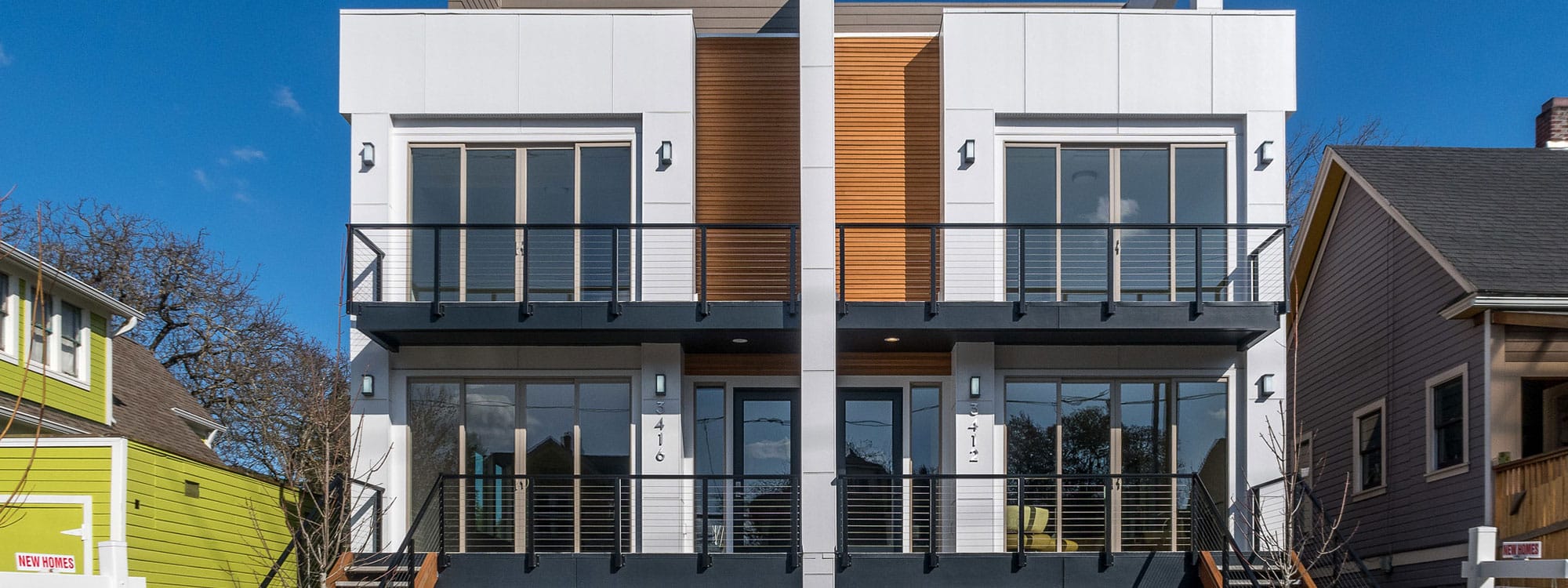In August, the City of San José General Plan Task Force voted to recommend the concept of Opportunity Housing as part of their General Plan four-year review. Originally scheduled for this May, the San Jose City Council will be voting on whether or not to direct staff to study the impacts of Opportunity Housing in San Jose in the fall of 2021. This study is a critical step in the overall process, which will result in the staff presenting their key findings to the City Council, who will then decide if they will move forward with the proposal for Opportunity Housing.
Opportunity Housing refers to enabling multi-unit housing on properties with a Residential Neighborhood General Plan land use designation. In San José, these are typically properties in single-family neighborhoods.
Greenbelt Alliance is proud to support efforts like this to add density to existing neighborhoods in a way that cost-effectively expands housing options for San José residents while maximizing land use and infrastructure. And it’s important to note that Opportunity Housing does not stop the production of single-family homes. It simply removes existing restrictions and allows homes to be converted into 2-4 units in single-family zoning areas.
The housing crisis and climate crisis are inextricably linked: adding multi-unit housing to single-family neighborhoods will help our region address the need for more housing choices closer to transit, jobs, and services while also reducing greenhouse gas emissions and building climate resilience.
Below are a few reasons why Greenbelt Alliance is excited to support Opportunity Housing:
- It’s Affordable By Design: Opportunity Housing typically creates more affordable housing by design since units are usually smaller than a single-family home and are created on one parcel, saving land and infrastructure costs. In San José, approximately 94% of residential land is designated for single-family homes and only 6% is for multi-family homes. There is zoning that allows for highrise and mid-rise apartment buildings downtown and in urban villages, but there is a need for missing-middle housing—a hybrid approach to development—that can yield greater housing affordability by design. Adding more units through Opportunity Housing will mean that more residents can afford to live near their families and in the communities they grew up in.
- It Bolsters Climate SMART Development: Opportunity Housing is climate SMART development. At Greenbelt Alliance, this means development that is Sustainable, Mixed, Affordable, Resilient, and Transit-Oriented (SMART). Getting rid of strict zoning requirements and giving communities the flexibility to grow their neighborhoods is the kind of policy that prioritizes affordable, low-emission development in the right places. By promoting climate SMART development we can create thriving, resilient neighborhoods with ready access to transit and housing choices for all of the Bay Area’s people.
- It Reduces GHG Emissions: Fossil fuel consumption in the transportation sector is 33%, the single largest source of the Bay Area’s greenhouse gas emissions. A 2019 study found that “80,000 commuters drive between the northern end of San Joaquin County and the Bay Area, an average of 120 miles, 75% of them alone in a car, 75% of them alone in a car.” With incremental density unlocked via Opportunity Housing, more people can afford to live closer to where they work and play, allowing options for biking or walking, thereby decreasing the greenhouse gases emitted from driving. Opportunity Housing supports transit, especially as transit-oriented development is more important than ever, which helps to reduce our greenhouse gas emissions.
- It Increases Housing Stock in Existing Areas: Opportunity Housing is a chance for San José to increase the housing stock at minimal cost to the City, in areas where housing already exists. Increasing density in existing areas means that San José can protect nearby open spaces like Coyote Valley, which are crucial for our region’s climate resilience, biodiversity, and water supply among other benefits. Our conservation work must consider the region’s housing needs and find innovative ways to accommodate growth without sprawl.
While Opportunity Housing is an excellent policy, it does not exist in a vacuum and Greenbelt Alliance would like to encourage the City of San José to equitably distribute this missing-middle housing across all neighborhoods. The original proposal to the City called for centralizing Opportunity Housing around transit corridors, which would increase transit-oriented development, but only in specific areas. This limits the policy’s efficacy and ignores the history of single-family zoning. Centralizing Opportunity Housing around transit corridors could place an undue housing burden on a subset of the city.
We need this kind of incremental density in all neighborhoods in San José, not just transit corridors. Greenbelt Alliance looks forward to working with the City of San José to help create healthy, thriving, resilient communities. In order to reduce greenhouse gas emissions and build resilient communities, we must produce more housing in a way that equitably distributes homes across neighborhoods.
These are just some of the reasons that Opportunity Housing in San José is a strategy we need to capitalize on to make our region more climate-resilient and equitable for all. We are committed to advocating for climate SMART developments across the Bay Area so that our region prioritizes affordable, low-emission, climate-resilient development in the right places that avoid climate hazard areas. Learn more about our suite of advocacy and development endorsement initiatives via our Climate SMART Development Program that will bolster the local support needed to address the housing crisis and prepare for climate change in an equitable way.
Learn more about the coalition working towards a more Climate Smart San José here!




